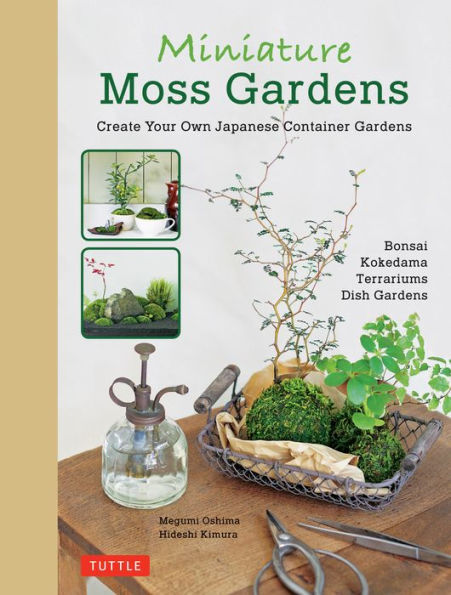Table of Contents
Foreword: A Peek Into the Secret World of Moss 08
Chapter 1 An Introduction to Moss
What is Moss? 12
The Characteristics of Moss and How It Spreads 13
The Structure of Moss 14
Three Types of Moss 15
About Moss 1 Moss Symbolizes "Motherly Love" in the Language of Flowers 16
Chapter 2 Observation, Discovery and Gathering
The Best Way to Observe and Collect Moss 18
Early Morning or After Rain are Ideal 19 Tools for Observing and Gathering Moss 20
How to Look at Moss Close Up 21
About Moss 2 Is Bryum Good for Allergies? 22
Chapter 3 Care and Maintenance
How to Maintain Moss 24
How to Obtain Moss 25
Tools for Maintaining Moss 26
Fertilizer and Revitalizing Agent 27
When to Water 28
How to Water 29
Where to Keep Moss 30
Moving Moss Around 32
Moss Troubleshooting 34
When on Vacation 35
How to Grow More Moss 36
Sowing Method 37
Cutting Method 38
Moss Stretching Method 39
About Moss 3 Once There was a "Moss Color" 40
Chapter 4 Making and Displaying Moss Creations
The Right Moss for You 42
Necessary Items for Moss Gardening 46
Basic Tools for Moss Gardening 47
Soil and Sand for Planting 48
Making Planting Soil 49
Kokedama 50
What is a Kokedama? 51
Making a Kokedama 52
Caring for a Kokedama 54
Different Kinds of Kokedama 55
Making a Moss Ball 56
Moss Bonsai 58
What is a Moss Bonsai? 59
Making a Moss Bonsai 60
Caring for a Moss Bonsai 62
Plants That Complement Moss 63
Moss Tray Landscapes 64
What is a Moss Tray Landscape? 65
Making a Moss Tray Landscape 66
Plan Moss Trays Carefully 68
Replanting a Moss Tray Landscape 69
Creating Waterside Scenery 70
Creating a Landscape with Driftwood 72
Creating a Landscape with Rocks 74
Moss Terrariums 76
What is a Moss Terrarium? 77
Making a Moss Terrarium 78
Caring for a Moss Terrarium 80
Moss Terrarium Tricks 81
Items for Displaying Moss 82
What is a Moss Garden? 83
About Moss 4 Photographing Moss 84
Chapter 5 Finding Moss in Cities and Mountains
Where is Moss Found? 86
How to Find Moss 87
In Cities 88
In Mountains and Forests 89
Moss in Cities and Mountains 90
When Collecting Moss 91
Shinjuku Area 92
Inokashira Park 94
Mt. Takao 98
Kamakura 102
About Moss 5 Composing a Verse About Moss 106
Chapter 6 Moss Identification Guide
Moss ID 1 Leucobryum neilgherrense 108
Moss ID 2 Bryum argenteum 109
Moss ID 3 Hydrophila propagulifera 110
Moss ID 4 Brachymenium exile 111
Moss ID 5 Racomitrium canescens 112
Moss ID 6 Leucobryum bowringii Mitt. 113
Moss ID 7 Polytrichum juniperinum 114
Moss ID 8 Hypnum plumaeforme 115
Glossary of Moss Terms 116
Afterword 118



